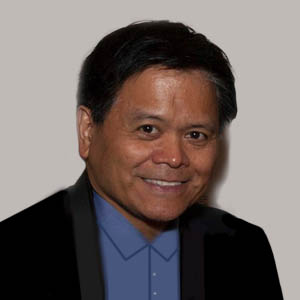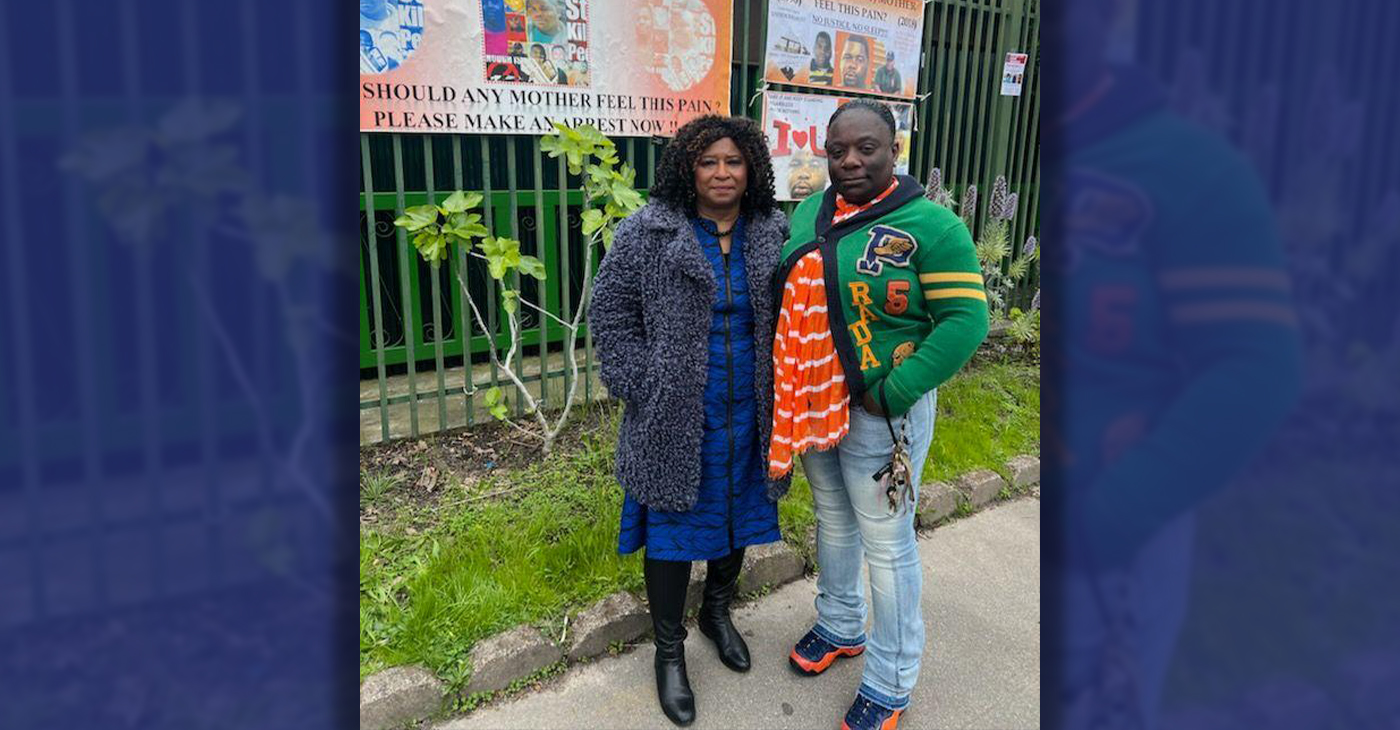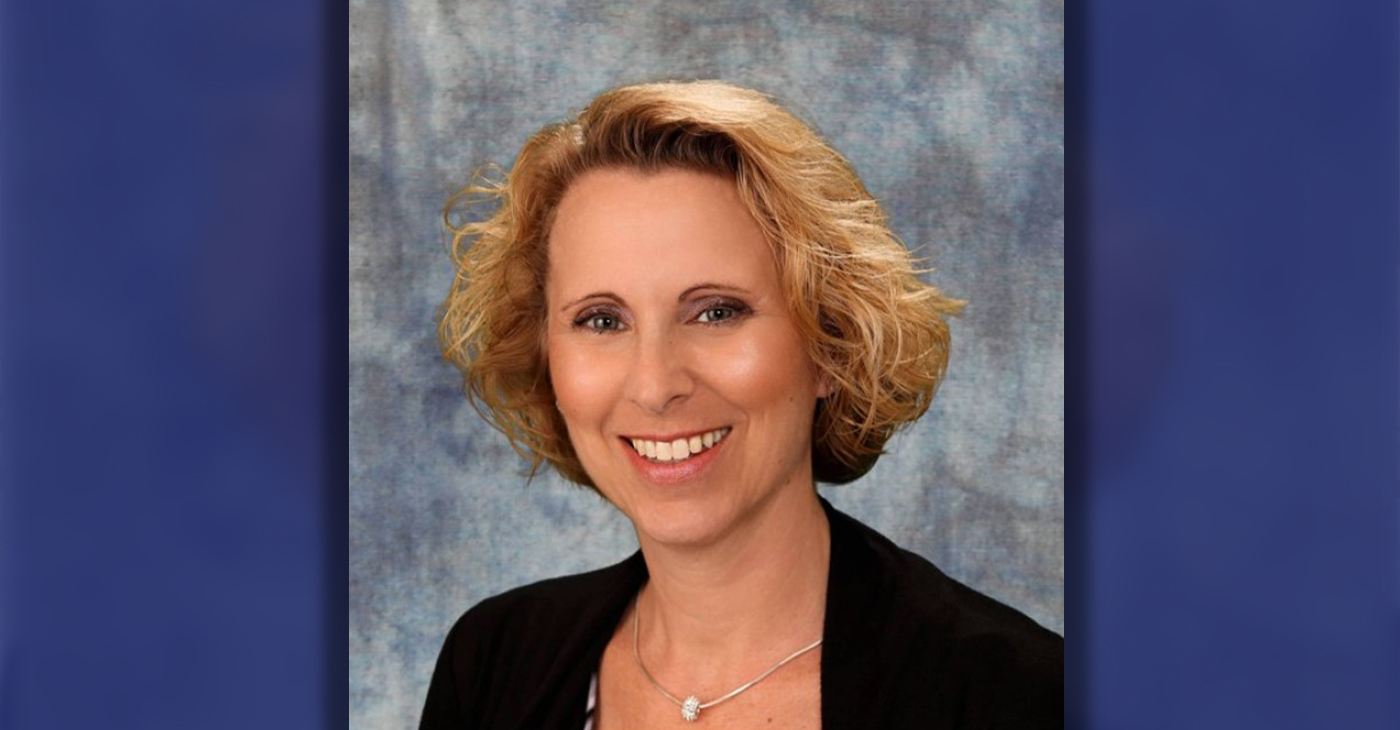Featured
OPINION: When the ‘F’ Word and the ‘N’ Word Meant the Same Thing: Filipino
The insurrectos are very different from the insurrectionists you’ve been hearing about in the news recently. The rioters who attacked Capitol Hill on January 6, were dubbed “insurrectionists” because they were urged to fight and pillage the Capitol based on former Pres. Donald Trump’s lies of a stolen election.

For some of you, to know of the singer H.E.R., the African American Filipino singer from Vallejo who kicked off Super Bowl LV with her rendition of “America,” would be ‘woke’enough.
But the ‘wokiest’ of the woke would appreciate that the game was three days after February 4, the anniversary of the day when the very first gunshots of the U.S.-Philippine War were aimed at Filipinos.
Still the wokiest yet would remember that the Super Bowl was being played in the hometown of one David Fagen, the African American hero of the Filipino “Insurrectos” of 1899.
Fagen knew when the “N” word and the “F” word both meant “Filipino.” For real. Let me explain.
Fagen was an African American born in Florida in 1875, at a time of continuing oppression and discrimination in the South. According to historian Howard Zinn, between 1889-1903 “on average, every week, two Negroes were lynched by mobs—hanged, burned, mutilated.”
This is well after the Civil War, when the best America could do was the 1896 Plessy v. Ferguson case, which made “separate but equal” the law and created what essentially would become an American caste system.
Imagine the mindset of a young Fagen, who joined the segregated, all-Black 24th Infantry as one of the “Buffalo Soldiers” sent to fight Native Americans. Perhaps he was just following orders, but when that deed was done, Fagen and the others were sent to fight in the Spanish American War, first in Cuba, then to Asia.
There they fought the war everyone wants you to forget.
After a brief stop in San Francisco, Fagen shipped off to the Philippines, where things began to fall apart morally when the first gunshots were fired at Filipinos on the aforementioned Feb. 4, 1899.
By then, Fagen had reached his existential WTF moment, and I don’t mean “what the Filipino?” But it might have been.
Fagen questioned how any African American with integrity or empathy could fight a white man’s war and turn his gun on another person of color fighting for freedom.
Maybe his feelings began during his first campaign against Native Americans, but by the second go-round in the jungles of the Philippines, he could no longer fight for the U.S. imperial army. Fagen became one of 15 to 30 deserters among the four units of the all-Black “Buffalo Soldiers.”
Fagen’s distinction: he was the only one known to have actually joined the Filipino freedom fighters of the U.S.-Philippine War.
My friend, Prof. Daniel Gonzales of San Francisco State University’s Ethnic Studies Dept., prefers that naming phrase to the more common Philippine-American War because the U.S. was the aggressor on Philippine soil and caused more deaths. Among Filipino civilians alone, casualties as a result of the war are estimated to be around 1 million lives. Some call it borderline genocide, which is debatable. But there’s no doubt this was America’s imperial war, more deadly than our present-day coronavirus war.
The real insurrectionists
The Filipino freedom fighters were the real “insurrectos,” or insurrectionists in American history; or as I see it, they were the insurrectionists based on truth.
David Fagen had to become one of them when he saw the U.S. was there to subjugate and colonize the Philippines.
The insurrectos are very different from the insurrectionists you’ve been hearing about in the news recently. The rioters who attacked Capitol Hill on January 6, were dubbed “insurrectionists” because they were urged to fight and pillage the Capitol based on former Pres. Donald Trump’s lies of a stolen election. The vast majority of these Trump insurrectionists were white and racist. Once unleashed, they destroyed federal property and threatened the lives of both Mike Pence and Nancy Pelosi. In the end, when all was said and done, five people died.
And when they were done, they were so proud they started taking selfies.
No one was taking selfies in the Philippines.
For the Filipinos, it was a war of passion, often fought with spears and knives to ward off an American desire for domination and conquest fueled by racism.Through letters written by African American soldiers and published in America by the Black ethnic press, such as the Boston Post, the Cleveland Gazette, and the American Citizen in Kansas City, Americans at home learned the truth about just how racist the war was in the Philippines.
“I feel sorry for these people and all that have come under the control of the United States,” wrote Patrick Mason, a sergeant in Fagen’s 24th Infantry, to the Cleveland Gazette. “The first thing in the morning is the “(N-word)”and the last thing at night is the “(N-word).”. . .You are right in your opinions. I must not say as much as I am a soldier.”
This was the power of the ethnic press as described in E. San Juan Jr.’s essay on Fagen, that sources the Willard Gatewood book, “‘Smoked Yankees’ and the Struggle for Empire: Letters From Negro Soldiers, 1898-1902.”
It makes the racist nature of the war clear and provides an understanding for Fagen’s defection. On Nov. 17, 1899, Fagen crossed the line and joined the guerrillas.
Historians note that Fagen was so good as a Filipino freedom fighter, he was promoted to captain on Sept. 6, 1900. Some Filipinos even called him “General Fagen.” His notoriety grew as he clashed on the battlefield with the U.S. military forces, specifically Gen. Frederick Funston. Fagen’s exploits were covered by the New York Times.
The war came to an official end in 1902 after Filipino rebel leaders like Emilio Aguinaldo surrendered beginning in the spring of 1901. But Fagen kept fighting and was never found. He was said to have married a Filipina and gone into hiding in the mountains of Nueva Ecija, on the island of Luzon.
Fagen’s head or a head fake?
San Juan Jr. tells a story of Anastacio Bartolome, who, in December 1901, brought a decomposed head said to be Fagen’s to Bongabong, Nueva Ecija. Bartolome produced other pieces of documentary evidence, like weapons or clothing, but the military didn’t consider it credible, nor did they give Bartolome a reward. San Juan suspects the items may have been stolen and the head could have been someone’s from the Aeta, a black aboriginal tribe. Bartolome may have also been a ruse to throw off Fagen’s pursuers.
Nevertheless, it was the Black press that wrote an obituarywith a sympathetic point of view. On Dec. 14, 1901, The Indianapolis Freeman did not condemn Fagen as a traitor but painted the picture of a man “prompted by honest motives to help a weaker side, and one to which he felt allied by the ties that bind.”
And that’s the oft-forgotten Asian part of Black History Month, where soldiers lie David Fagen found common ground among the dark-skinned Asian freedom fighters in the mountain jungles of the Philippines.
If you’ve never heard of this history, it’s not surprising. It’s one that runs counter to America’s white supremacist narrative.
The birth of colonial mentality
My father, who was born under the American flag in the Philippines a few weeks after the U.S.-Philippine war started, lived in the aftermath, yet probably knew nothing about Fagen. That likely wasn’t taught in his colonized American school, where he learned English well enough to come to America in the 1920s as a colonized American national.
All throughout the discrimination my father faced in the U.S. (anti-miscegenation, lack of opportunities in employment and housing), he found himself in the Black community. But he still was in the throes of colonial mentality. Generally, that’s known as an acceptance of the white narrative, as one ‘goes along to get along’ in society.
It’s a mindset that lingers to this day among many in the large Asian American subgroup of Filipino Americans, more than 4 million strong. It’s the reason I no longer participate in some Filipino American projects that too often discount truth for a more passive, glorified U.S. perspective. Wokeness is not an option for the latter-day colonial minded.
They all could use some of the insight from David Fagen’s history.
He challenged an immoral and imperialistic American war. And he knew right away his connection to other people of color in Asia fighting to be free—the Filipino.
When you lack the nerve to break the bonds of colonial mentality, think of Fagen, who heard the “N” word referring to Filipinos, and knew better.
It’s a lesson worth thinking about all the time, and not just during Black History Month.
Emil Guillermo is a journalist and commentator. Listen to his podcast/vlog, where he talks about Fagen with Prof. Daniel Phil Gonzales on amok.com
Alameda County
DA Pamela Price Stands by Mom Who Lost Son to Gun Violence in Oakland
Last week, The Post published a photo showing Alameda County District Attorney Pamela Price with Carol Jones, whose son, Patrick DeMarco Scott, was gunned down by an unknown assailant in 2018.

Publisher’s note: Last week, The Post published a photo showing Alameda County District Attorney Pamela Price with Carol Jones, whose son, Patrick DeMarco Scott, was gunned down by an unknown assailant in 2018. The photo was too small for readers to see where the women were and what they were doing. Here we show Price and Jones as they complete a walk in memory of Scott. For more information and to contribute, please contact Carol Jones at 510-978-5517 at morefoundation.help@gmail.com. Courtesy photo.
City Government
Vallejo Welcomes Interim City Manager Beverli Marshall
At Tuesday night’s Council meeting, the Vallejo City Council appointed Beverli Marshall as the interim city manager. Her tenure in the City Manager’s Office began today, Wednesday, April 10. Mayor Robert McConnell praised Marshall’s extensive background, noting her “wide breadth of experience in many areas that will assist the City and its citizens in understanding the complexity of the many issues that must be solved” in Vallejo.

Special to The Post
At Tuesday night’s Council meeting, the Vallejo City Council appointed Beverli Marshall as the interim city manager. Her tenure in the City Manager’s Office began today, Wednesday, April 10.
Mayor Robert McConnell praised Marshall’s extensive background, noting her “wide breadth of experience in many areas that will assist the City and its citizens in understanding the complexity of the many issues that must be solved” in Vallejo.
Current City Manager Michael Malone, whose official departure is slated for April 18, expressed his well wishes. “I wish the City of Vallejo and Interim City Manager Marshall all the best in moving forward on the progress we’ve made to improve service to residents.” Malone expressed his hope that the staff and Council will work closely with ICM Marshall to “ensure success and prosperity for the City.”
According to the Vallejo Sun, Malone stepped into the role of interim city manager in 2021 and became permanent in 2022. Previously, Malone served as the city’s water director and decided to retire from city service e at the end of his contract which is April 18.
“I hope the excellent work of City staff will continue for years to come in Vallejo,” he said. “However, recent developments have led me to this decision to announce my retirement.”
When Malone was appointed, Vallejo was awash in scandals involving the housing division and the police department. A third of the city’s jobs went unfilled during most of his tenure, making for a rocky road for getting things done, the Vallejo Sun reported.
At last night’s council meeting, McConnell explained the selection process, highlighting the council’s confidence in achieving positive outcomes through a collaborative effort, and said this afternoon, “The Council is confident that by working closely together, positive results will be obtained.”
While the search for a permanent city manager is ongoing, an announcement is expected in the coming months.
On behalf of the City Council, Mayor McConnell extended gratitude to the staff, citizen groups, and recruitment firm.
“The Council wishes to thank the staff, the citizens’ group, and the recruitment firm for their diligent work and careful consideration for the selection of what is possibly the most important decision a Council can make on behalf of the betterment of our City,” McConnell said.
The Vallejo Sun contributed to this report.
City Government
Vallejo Community Members Appeal Major Use Permit for ELITE Charter School Expansion
Vallejo community members, former Solano County judge Paul Beeman and his wife Donna Beeman, filed an appeal against the approval of the Major Use Permit for the expansion of ELITE Public Schools into downtown less than two weeks after the Planning Commission approved the permit with a 6-1 vote.

By Magaly Muñoz
Vallejo community members, former Solano County judge Paul Beeman and his wife Donna Beeman, filed an appeal against the approval of the Major Use Permit for the expansion of ELITE Public Schools into downtown less than two weeks after the Planning Commission approved the permit with a 6-1 vote.
ELITE Charter School has been attempting to move into the downtown Vallejo area at 241-255 Georgia Street for two years, aiming to increase its capacity for high school students. However, a small group of residents and business owners, most notably the Beeman’s, have opposed the move.
The former county judge and his wife’s appeal alleges inaccuracies in the city’s staff report and presentation, and concerns about the project’s exemption from the California Environmental Quality Act (CEQA).
The Beeman’s stress that their opposition is not based on the charter or the people associated with it but solely on land use issues and potential impact on their business, which is located directly next to the proposed school location.
The couple have been vocal in their opposition to the expansion charter school with records of this going back to spring of last year, stating that the arrival of the 400 students in downtown will create a nuisance to those in the area.
During the Planning Commission meeting, Mr. Beeman asked Commissioner Cohen-Thompson to recuse herself from voting citing a possible conflict of interest because she had voted to approve the school’s expansion as trustee of the Solano County Board of Education. However, Cohen-Thompson and City Attorney Laura Zagaroli maintained that her positions did not create a conflict.
“I feel 100% that the attorney’s opinion is wrong,” Beeman told the Post.
He believes that Cohen-Thompson has a vested interest in upholding her earlier vote as a trustee and is advocating for people to ratify her opinion.
Cohen-Thompson declined to comment on the Post’s story and Zagaroli did not respond for comment.
The Beeman’s further argue that the school’s presence in the commercial district could deter future businesses, including those who sell alcohol due to proximity to schools.
According to Alcohol Beverage Control (ABC), the department can deny any retail license located within 600 feet of a school. Only one alcohol selling business is located within that range, which is Bambino’s Italian restaurant at 300 feet from the proposed location.
The project’s proponents argue that the school would not affect current or future liquor-selling establishments as long as they follow the ABC agency’s guidelines.
The Beeman’s also referenced Vallejo’s General Plan 2040, stating that the proposed expansion does not align with the plan’s revitalization efforts or arts and entertainment use. They argue that such a development should focus on vacant and underutilized areas, in accordance with the plan.
The proposed location, 241 Georgia Street aligns with this plan and is a two minute walk from the Vallejo Transit Center.
The General Plan emphasizes activating the downtown with, “Workers, residents, and students activate the downtown area seven days a week, providing a critical mass to support a ‘cafe culture’ and technology access, sparking innovation and entrepreneurship.”
City staff recommended exempting the project from CEQA, citing negligible impacts. However, Beeman raised concerns about increased foot traffic potentially exacerbating existing issues like theft and the lack of police presence downtown. He shared that he’s had a few encounters with kids running around his office building and disturbing his work.
Tara Beasley-Stansberry, a Planning Commissioner and owner of Noonie’s Place, told the Post that the arrival of students in downtown can mean not only opportunities for surrounding businesses, but can allow for students to find their first jobs and continue to give back to the community in revitalization efforts.
Beasley-Stansberry had advocated for the students at the March Commission meeting, sharing disappointment in the way that community members spoke negatively of the teens.
“To characterize these children as criminals before they’ve even graduated from high school, that’s when I had to really take a look and I was kind of lost as to where we were as a city and as a community to where I couldn’t understand how we were viewing these children,” Beasley-Stansberry told the Post.
She added that the commissioners who voted yes on the project location have to do what is right for the community and that the city’s purpose is not all about generating businesses.
ELITE CEO Dr. Ramona Bishop, told the Post that they have worked with the city and responded to all questions and concerns from the appropriate departments. She claimed ELITE has one of the fastest growing schools in the county with mostly Vallejo residents.
“We have motivated college-bound high school students who deserve this downtown location designed just for them,” Bishop said. “We look forward to occupying our new [location] in the fall of 2024 and ask the Vallejo City Council to uphold their Planning Commission vote without delay.”
The Vallejo City Council will make the final decision about the project location and Major Use Permit on April 23.
-

 Activism4 weeks ago
Activism4 weeks agoOakland Post: Week of March 27 – April 2, 2024
-

 #NNPA BlackPress4 weeks ago
#NNPA BlackPress4 weeks agoCOMMENTARY: D.C. Crime Bill Fails to Address Root Causes of Violence and Incarceration
-

 #NNPA BlackPress4 weeks ago
#NNPA BlackPress4 weeks agoFrom Raids to Revelations: The Dark Turn in Sean ‘Diddy’ Combs’ Saga
-

 #NNPA BlackPress4 weeks ago
#NNPA BlackPress4 weeks agoMayor, City Council President React to May 31 Closing of Birmingham-Southern College
-

 #NNPA BlackPress4 weeks ago
#NNPA BlackPress4 weeks agoBaltimore’s Key Bridge Struck by Ship, Collapses into Water
-

 #NNPA BlackPress4 weeks ago
#NNPA BlackPress4 weeks agoBeloved Actor and Activist Louis Cameron Gossett Jr. Dies at 87
-

 Community1 week ago
Community1 week agoFinancial Assistance Bill for Descendants of Enslaved Persons to Help Them Purchase, Own, or Maintain a Home
-

 Activism3 weeks ago
Activism3 weeks agoOakland Post: Week of April 3 – 6, 2024






















































